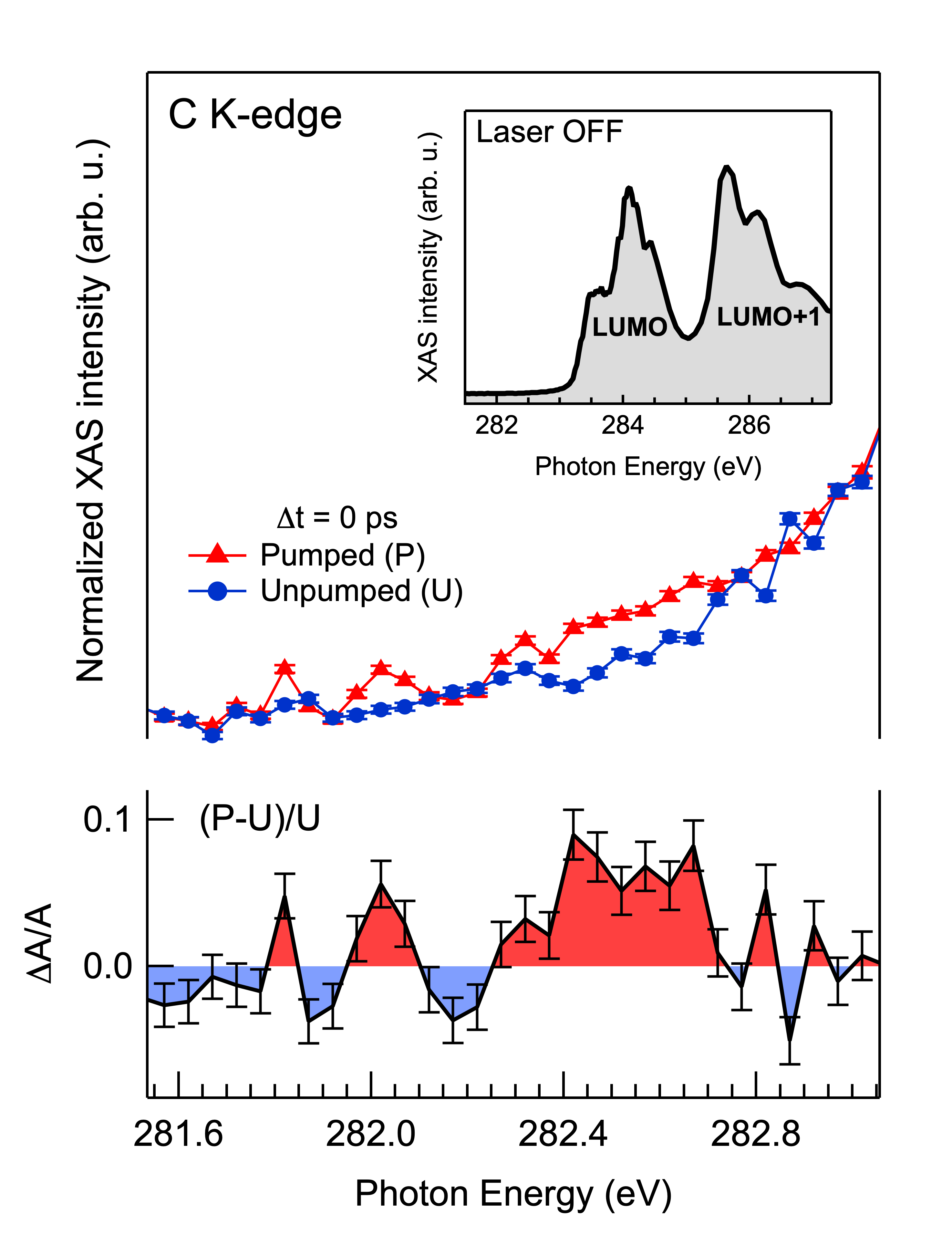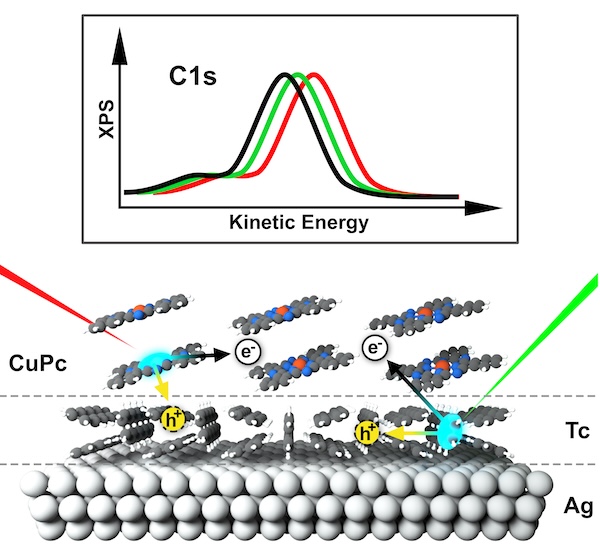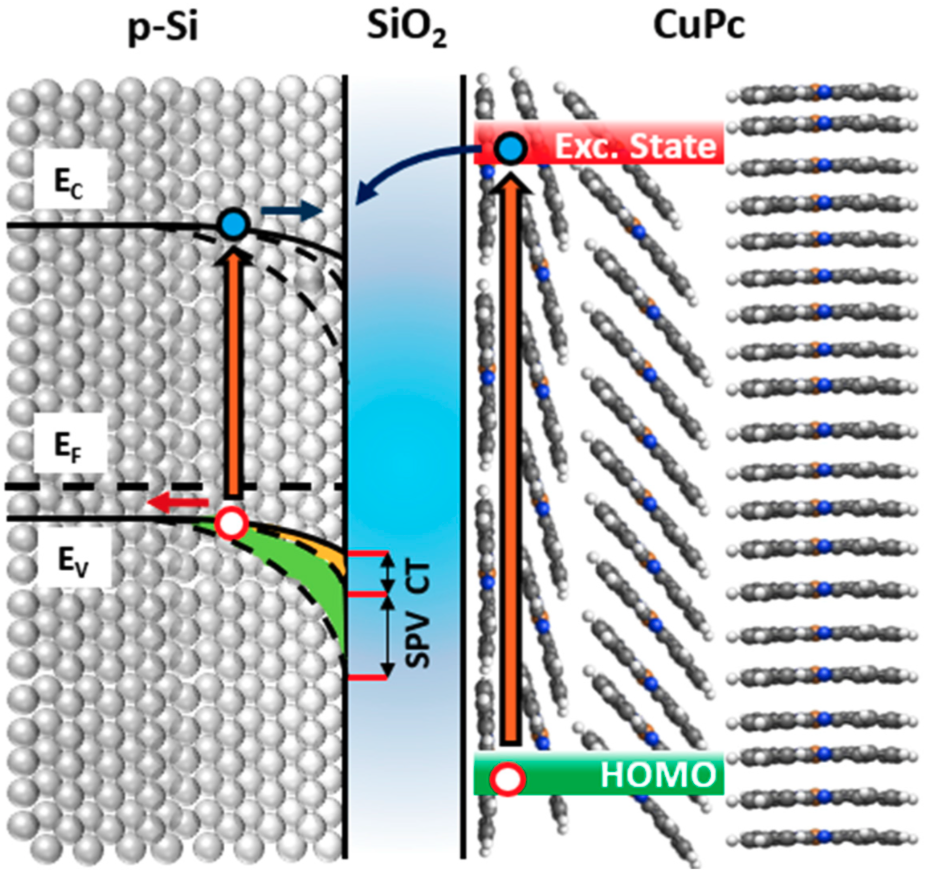Picosecond tracking of pentacene triplet excitons

 We use pump-probe spectroscopies to characterize the exciton dynamics in organic semiconductors and hybrid organic-inorganic
heterojunctions. Organic semiconductors combine the electronic properties of traditional semiconductors with
the mechanical flexibility and chemical tunability of molecular precursors. These materials already demonstrated their relevance
in prototypical optoelectronic devices such as light-emitting diodes (LEDs) and photovoltaic cells, but a more complete understanding
of the mechanisms governing charge generation, transport, and recombination in these materials is critical for improving their
efficiency and unlocking new functionalities.
Studying these systems at the microscopic level allow us to uncover how energy levels align at donor-acceptor interfaces,
how excitons are separated into free carriers, and how we can modify the molecular film in order to gain control over the
heterojunction electronic properties.
We use pump-probe spectroscopies to characterize the exciton dynamics in organic semiconductors and hybrid organic-inorganic
heterojunctions. Organic semiconductors combine the electronic properties of traditional semiconductors with
the mechanical flexibility and chemical tunability of molecular precursors. These materials already demonstrated their relevance
in prototypical optoelectronic devices such as light-emitting diodes (LEDs) and photovoltaic cells, but a more complete understanding
of the mechanisms governing charge generation, transport, and recombination in these materials is critical for improving their
efficiency and unlocking new functionalities.
Studying these systems at the microscopic level allow us to uncover how energy levels align at donor-acceptor interfaces,
how excitons are separated into free carriers, and how we can modify the molecular film in order to gain control over the
heterojunction electronic properties.
In our laboratory, we exploit a pulsed laser and synchrotron radiation to perform time-resolved X-ray spectroscopies in the sub-nanosecond time scale. Compared to
conventional laser-based spectroscopies, X-rays allow accessing the core levels of the system, which enables element-selective
tracking of the excited state dynamics. This advantage can provide crucial insights in complex heterojunctions, which can help disentangle the
contribution of the different materials to the charge transfer mechanisms.


